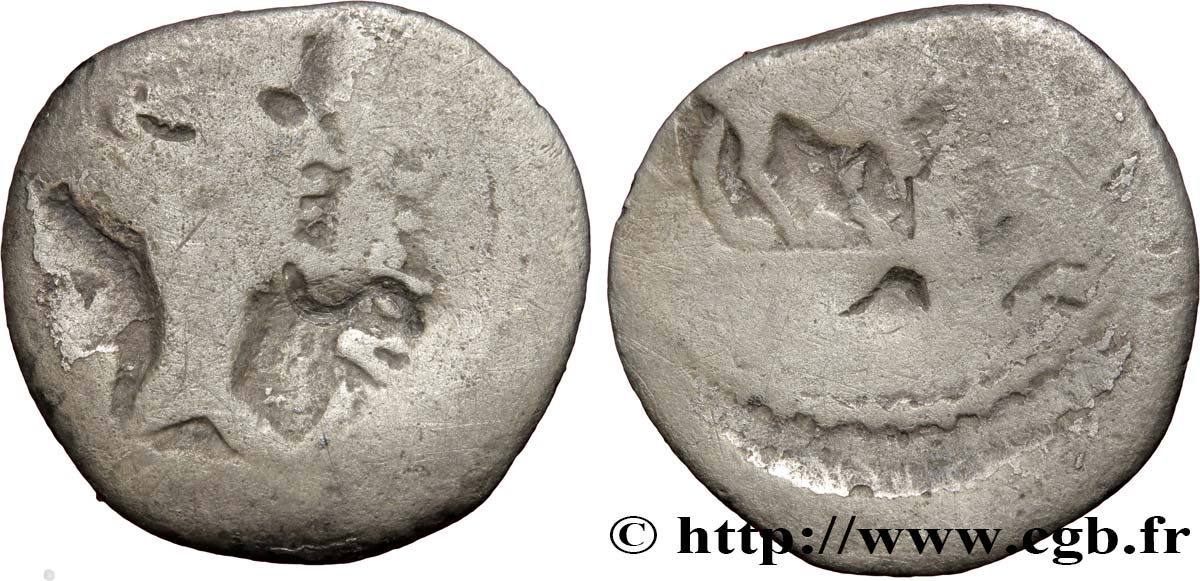E-auction 156-93816 - bga_388331 - LUGDUNUM - LYON - OCTAVIAN AND JULIUS CAESAR Quinaire
Чтобы принять участие в торгах, вы должны войти в систему и стать подтвержденным участником аукциона. Войдите, чтобы сделать ставку. Ваш аккаунт будет подтвержден в течение 48 часов. Не ждите до закрытия торгов, чтобы зарегистрироваться.Сделав ставку на данный товар, вы вступаете в юридическое соглашение на покупку выбранного товара и нажатием кнопки «Сделать ставку» подтверждаете принятие вами условий интернет-аукционов cgb.fr.
Ставка может бить сделана только в полном эквиваленте евро. Торги закроются согласно времени, указанному в описании товара, все ставки, сделанные после закрытия торгов, учитываться не будут. Не следует откладывать предложение вашей ставки до последнего момента, так как система может не успеть обработать вашу заявку, и ваша ставка не будет принята. Более детальную информацию вы найдёте здесь: FAQ по интернет-аукционам.
БЕСПЛАТНО.
БЕСПЛАТНО.
| Оценить : | 120 € |
| Цена : | 38 € |
| Максимальная предлагаемая цена : | 40 € |
| Конец торгов : | 11 April 2016 14:14:00 |
| Участников : | 5 Участников |
Тип Quinaire
Дата: c. 42 AC.
Монетный двор / Город: Gaule, Lyon
Металл: silver
Диаметр: 13 mm
Ориентация осей монеты: 12 h.
Вес: 1,16 g.
Редкость: R2
Комментарии о состоянии
Quinaire mal frappé et usé, mais encore identifiable. Fine patine grise avec des marques de changeur
Ссылки в каталоге: :
Лицевая сторона
Аверс: легенда: [III. VIR] - R. P. C..
Аверс: описание: Buste ailé de Victoria (la Victoire) à droite sous les traits de Fulvie.
Аверс: перевод: “Triumviri Rei Publicæ Constituandæ”, (Triumvirat pour la restauration du gouvernement).
Обратная сторона
Реверс: легенда: ANTONI// IMP ; A À GAUCHE ET XLI À DROITE.
Реверс: Описание: Lion passant à droite.
Реверс: перевод: “Antoni Imperatori/ Anno quarantegesimus primus”, (À Antoine Imperator/ quarante-et-unième anniversaire).
Комментарий
Avec ces quinaires, nous pourrions avoir affaire à une émission militaire destinée à payer les troupes au service de Marc Antoine.








 Cообщить об ошибке
Cообщить об ошибке Распечатать страницу
Распечатать страницу Отправить мой выбор
Отправить мой выбор Задать вопрос
Задать вопрос Consign / sell
Consign / sell
 Информация
Информация








